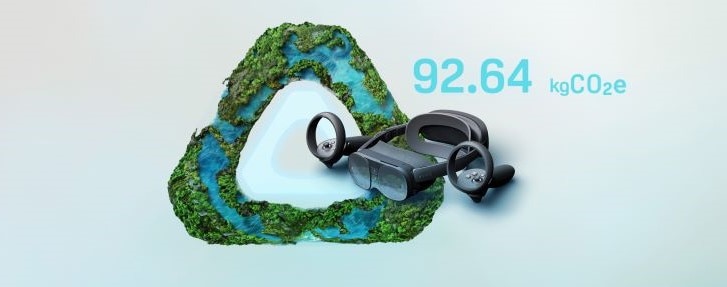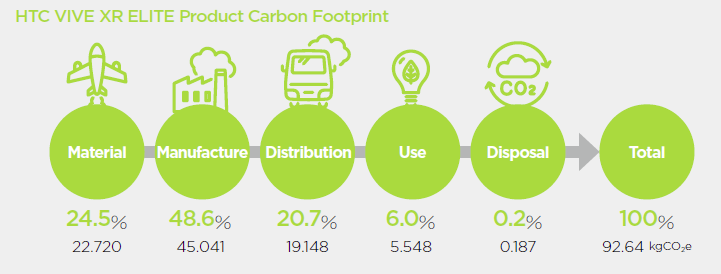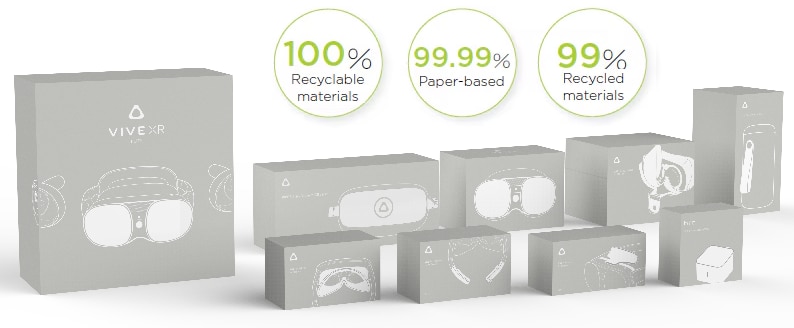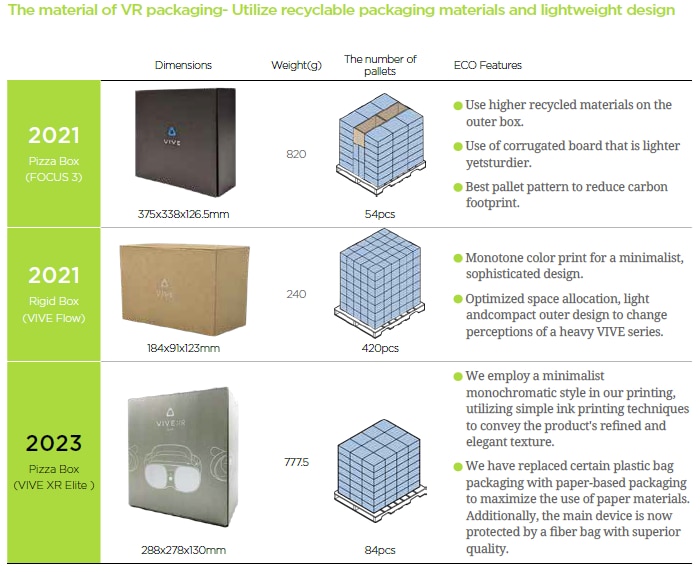Sustainable Product
Taking circular economy as the direction for development
In order to achieve the goal of sustainable development, the thinking of circular economy is adopted to design and manufacture HTC products. We think about how to use the limited resources of the earth cautiously so that maximum efficiency can be generated and the effectiveness can be maintained within the industrial system to achieve sustainable operation. The following are our practices:
-
• Maximal use of single plastic material helps make recycling easier. Exclusion of materials made with hazardous chemical substances and lightweight products are the future product design.
-
• Extended product lifecycle; use of modular designs for hardware upgradability and for changing spare parts.
-
• Product energy-saving design.
-
• Use recycled materials for manufacturing and packaging.
-
• Reduce the environmental impact of the manufacturing process, use recycled water and renewable energy.
More energy-saving and carbon-reducing - VIVE XR ELITE
VIVE XR ELITE Product Carbon Footprint

As a leading brand in virtual reality industry, HTC has been committed to environmental protection and sustainability. To reduce the impact of products to the environment, from January to March 2024, we used the new established internal carbon management platform to conduct a comprehensive carbon footprint assessment of each stage process of the VIVE XR ELITE, including raw material selection and packaging methods, and obtained ISO 14067: 2018 verification statement, covering from cradle to grave. Product carbon footprint is an analysis of greenhouse gas emissions throughout the product life cycle, including the acquisition of raw materials, manufacturing, distribution, use, and disposal stage. The carbon footprint of each VIVE XR ELITE (including packaging) is 92.64 kgCO2e, and the main carbon emission hotspots are concentrated in the raw material manufacturing and distribution and product manufacturing stage. When developing new products in the future, we will be committed to sustainable design and sustainable supply chain promotion. In addition, since the electricity consumption in the manufacturing process is the main carbon hotspot, we can also improve the efficiency of electricity consumption in the future. HTC is committed to improving carbon emissions in every process, and providing products to consumers that are more green, environmentally friendly, and healthy, and integrating the spirit of sustainability into the entire life cycle of each product.
HTC VIVE XR ELITE Product Carbon Footprint:
https://www.htc.com/us/esg/certificate-report/

Environmentally friendly with sustainable packaging
HTC taking environmentally friendly and sustainable development as the primary concern when designing lightweight packaging, ensuring the protection and of the product and aesthetic while at the same time reducing impact of the packaging to the environment.
All packaging materials HTC uses for its products fully comply with EC directive on packaging (EU 94/62/EC) and the US requirement on packaging (Model Toxics in Packaging Legislation of USA), and all printing ink used on HTC product packaging are low-volatility ink or soy ink certified by the American Soybean Association. We put a lot of effort into packaging design to ensure all the packaging materials are in line with the principle of environmentally friendly and sustainable development, minimizing impact of the product packaging to the environment.
Starting in 2022, HTC will use 99% recycled materials to make packaging while maintaining the exquisiteness of the packaging. In 2023, it will be fully introduced into the latest VIVE XR Elite series project. Not only are all packaging materials used 100% recyclable materials, 99.99% of them are made of plant fibers, actively promoting the maximum use of plant fibers in full packaging, demonstrating HTC’s unremitting pursuit of corporate social responsibility. In terms of sustainable packaging design, the VIVE XR series battery holder and the paper packaging materials for VIVE accessories have recycled content accounting for up to 99%, confirming HTC’s active efforts in promoting a circular economy and its commitment to starting from small businesses. Our firm commitment to environmental sustainability is reflected in the details.

History of HTC “Sustainable Packaging”

HTC Sustainable Logistics
HTC has customers all over the world, and considering the importance of sustainability, we actively reduce the volume and weight of product packaging, improve shipping efficiency, and choose transportation methods with lower environmental impact to reduce our carbon footprint and do our part in global sustainability. We actively promote carbon reduction measures while distributing goods transportation, which can not only effectively reduce carbon emissions, but also save costs, and pass back the saved costs to customers to achieve winwin benefits.
-
• Global warehouse setup strategy to optimize distribution mode and shorten the distance to international airports/seaports, adjust warehouse locations
-
• Choosing a low-carbon means of transport
-
• Multiple orders or multiple products are combined to reduce the number of deliveries